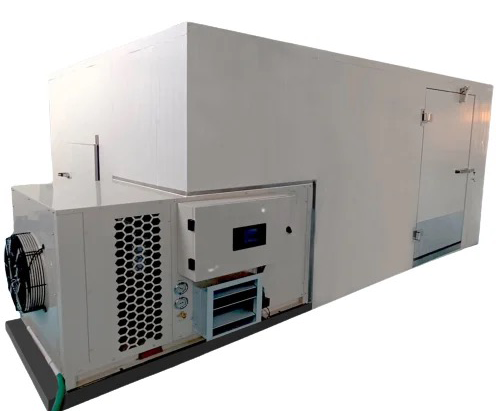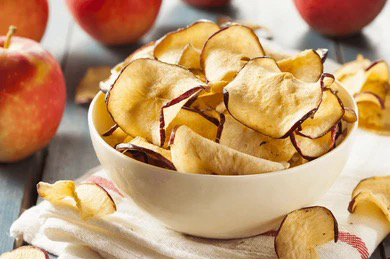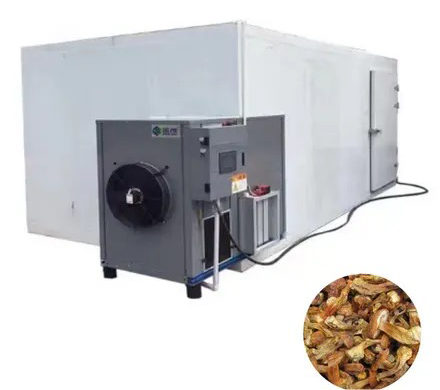
Content Menu
● Understanding Food Dryers
>> What is a Condenser Dryer?
>> What is a Heat Pump Dryer?
● Comparison of Condenser Dryers and Heat Pump Dryers
● Advantages of Each Type
>> Advantages of Condenser Dryers
>> Advantages of Heat Pump Dryers
● Disadvantages of Each Type
>> Disadvantages of Condenser Dryers
>> Disadvantages of Heat Pump Dryers
● Applications in the Food Industry
● Energy Efficiency Considerations
● Quality Preservation
● User Experience
● Future Trends in Food Drying Technology
● Conclusion
● FAQ
>> 1. What is the main difference between a condenser dryer and a heat pump dryer?
>> 2. Which type of dryer is better for preserving food quality?
>> 3. Are heat pump dryers more expensive than condenser dryers?
>> 4. Can both types of dryers be used for all types of foods?
>> 5. How do I maintain my food dryer?
● Citations:
In the realm of food drying technology, understanding the differences between various drying methods is crucial for manufacturers and consumers alike. This article will delve into the specifics of food dryers, particularly focusing on the comparison between condenser dryers and heat pump dryers. We will explore their mechanisms, advantages, disadvantages, and applications in the food industry.

Understanding Food Dryers
Food dryers, also known as dehydrators, are essential appliances used to remove moisture from food items. This process helps in preserving food by inhibiting the growth of bacteria, yeast, and molds. The two primary types of dryers that are commonly discussed are condenser dryers and heat pump dryers.
What is a Condenser Dryer?
A condenser dryer operates by heating air and circulating it through the drum containing wet food items. The moisture-laden air is then cooled in a condenser unit, where the moisture condenses into water and is collected in a tank or drained away. This method is effective but typically operates at higher temperatures.
- Mechanism: The drying process begins when the dryer heats air to a specific temperature. This hot air is then blown into the drying chamber where it comes into contact with the wet food. As the air absorbs moisture, it becomes humid and is directed to the condenser unit. Here, the air is cooled down, causing moisture to condense into water droplets that are collected for disposal.
- Applications: Commonly used in commercial settings for drying fruits, vegetables, and meats quickly due to its efficiency in removing moisture.
What is a Heat Pump Dryer?
Conversely, a heat pump dryer utilizes a closed-loop system that recycles hot air to dry food. It works similarly to an air conditioner but in reverse. The dryer extracts moisture from the air using an evaporator before reheating it and circulating it back into the drying chamber. This method allows for lower drying temperatures, making it gentler on delicate foods.
- Mechanism: The heat pump dryer first draws in ambient air and passes it over an evaporator coil where it absorbs heat from the refrigerant inside. The now warm air is then circulated into the drying chamber. As it passes over the food items, moisture is extracted from them. The humid air returns to the evaporator where moisture is removed, and the cycle repeats.
- Applications: Ideal for high-value products like herbs, spices, and certain fruits that require careful handling due to their sensitivity to heat.
Comparison of Condenser Dryers and Heat Pump Dryers
| Feature | Condenser Dryer | Heat Pump Dryer |
| Drying Temperature | Higher (70-75°C) | Lower (around 50°C) |
| Energy Efficiency | Less efficient | More energy-efficient |
| Drying Time | Generally faster | Longer drying time |
| Cost | Typically lower initial cost | Higher initial investment |
| Environmental Impact | Higher due to energy consumption | Lower due to energy efficiency |
| Effect on Food Quality | Can degrade sensitive foods | Better preservation of nutrients |
Advantages of Each Type
Advantages of Condenser Dryers
- Faster Drying Times: Due to higher temperatures, condenser dryers can complete drying cycles more quickly.
- Lower Initial Cost: Generally more affordable upfront compared to heat pump models.
- Ease of Use: Simple operation with less need for monitoring.
Advantages of Heat Pump Dryers
- Energy Efficiency: Consumes significantly less energy per load compared to condenser dryers.
- Gentle on Food: Lower temperatures help preserve the quality and nutrients of delicate foods.
- Versatility: Can be used for a wider range of food items without risk of damage.
Disadvantages of Each Type
Disadvantages of Condenser Dryers
- Higher Operating Costs: More expensive to run due to higher energy consumption.
- Potential for Quality Loss: High temperatures can negatively affect sensitive foods.
Disadvantages of Heat Pump Dryers
- Longer Drying Times: Takes more time to dry items fully compared to condenser models.
- Higher Initial Investment: More expensive upfront costs can deter some buyers.

Applications in the Food Industry
Both types of dryers have their place in food processing:
- Condenser dryers are often used for bulk drying operations where speed is essential, such as in commercial settings where large quantities of fruits or vegetables need to be dried quickly. They are particularly useful in industries that require rapid processing times, such as snack production or bulk vegetable dehydration for soups and sauces.
- Heat pump dryers, with their ability to operate at lower temperatures, are ideal for preserving the quality of high-value products like herbs, spices, and certain fruits that are sensitive to heat. These dryers are increasingly popular among organic producers who prioritize quality over quantity and seek methods that retain nutritional value while ensuring safety through effective moisture removal.
Energy Efficiency Considerations
Energy consumption is a critical factor when evaluating food dryers. Heat pump dryers are renowned for their energy efficiency due to their ability to recycle heat within their system. This not only reduces electricity costs but also minimizes environmental impact by lowering carbon footprints associated with energy use.
In contrast, while condenser dryers may offer faster drying times initially, their higher energy consumption can lead to increased operational costs over time. For businesses looking at long-term sustainability and cost-effectiveness, investing in heat pump technology might be more beneficial despite the higher upfront costs.
Quality Preservation
The type of dryer used can significantly affect the quality of dried foods. Heat pump dryers excel at maintaining flavor profiles and nutritional content due to their lower operating temperatures. This makes them suitable for producing high-quality dried fruits that retain their vibrant colors and natural sweetness.
On the other hand, condenser dryers may cause some degradation in quality when processing sensitive items like herbs or certain berries. The high temperatures can lead to loss of volatile compounds responsible for flavor and aroma, thus affecting overall product quality.
User Experience
When considering user experience, both types of dryers have unique features that cater to different needs:
- Condenser Dryers: These units often come with straightforward controls that allow users to set desired temperatures easily. They usually require less monitoring once set up but may need regular maintenance checks on condensate tanks or filters to ensure optimal performance.
- Heat Pump Dryers: While they may have more complex controls due to their advanced technology, many modern models come with digital interfaces that simplify operation. Users can often program specific drying cycles tailored for various food types, enhancing versatility in usage.
Future Trends in Food Drying Technology
As technology evolves, so do food drying methods. Innovations such as smart technology integration are becoming prevalent in both condenser and heat pump dryers. These advancements allow users to monitor processes remotely via smartphone apps or control settings based on humidity levels detected within the drying chamber.
Moreover, sustainability trends are pushing manufacturers towards developing more eco-friendly models that utilize renewable energy sources or improve insulation within units to enhance energy efficiency further. As awareness grows about food waste and preservation techniques among consumers and businesses alike, these innovations will play a crucial role in shaping future markets for food dehydrators.
Conclusion
When choosing between a condenser dryer and a heat pump dryer for food drying applications, it is essential to consider factors such as energy efficiency, drying speed, cost implications, and the specific requirements of the food being dried. While condenser dryers may offer speed and lower initial costs, heat pump dryers provide superior energy efficiency and better preservation of food quality. Ultimately, the choice will depend on individual needs and operational priorities within various sectors of the food industry.

FAQ
1. What is the main difference between a condenser dryer and a heat pump dryer?
The main difference lies in their operating temperatures and energy efficiency. Condenser dryers operate at higher temperatures (70-75°C), while heat pump dryers operate at lower temperatures (around 50°C), making them more energy-efficient and gentle on food.
2. Which type of dryer is better for preserving food quality?
Heat pump dryers are better for preserving food quality due to their lower operating temperatures that help maintain nutrients and prevent degradation.
3. Are heat pump dryers more expensive than condenser dryers?
Yes, heat pump dryers generally have a higher initial purchase price but offer savings in energy costs over time due to their efficiency.
4. Can both types of dryers be used for all types of foods?
While both can dry various foods, heat pump dryers are more suitable for delicate items like herbs and fruits that require careful handling due to their lower temperatures.
5. How do I maintain my food dryer?
Regular cleaning of filters and condensers is essential for both types. For heat pump dryers, ensure that water collection tanks are emptied regularly to prevent mold growth.
Citations:
[1] https://www.orion-machinery.cn/chanpinxx41.html?productId=102
[2] https://www.antpedia.com/news/36/n-2598836.html
[3] https://www.antpedia.com/news/04/n-2599704.html
[4] https://www.zhuangxiaomi.com/28823/
[5] https://www.canstarblue.com.au/appliances/heat-pump-vs-condenser-dryer/
[6] https://www.siemens-home.bsh-group.com.hk/en/appliances/laundrycare/tumble-dryers/comparison-heat-pump-dryer-condenser-dryer
[7] https://www.businessresearchinsights.com/zh/market-reports/food-dryer-market-110309
[8] https://www.bilibili.com/read/cv14845620/
[9] https://news.qq.com/rain/a/20231027A08HPT00
[10] https://www.greencentral.co.uk/heat-pumps/heat-pump-vs-condenser-dryer/
[11] https://www.aztecappliance.com/blog/pros-cons-of-heat-pump-dryer
[12] https://www.sohu.com/a/611169530_121163951











